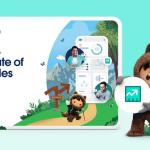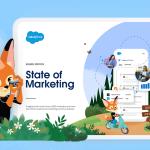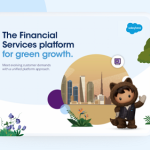We’re still talking about silos for one simple reason. They’re still a big problem.
In response to the pandemic, businesses accelerated their digital transformations to stay connected with customers. The problem is, that meaningful digital transformation is only possible with customer-first – not product-first – thinking.
With a product-first approach, digital transformation efforts focus on finding new ways to sell existing products or solutions to customers… And often leave the data foundation behind those offerings untouched.
Customer-first thinking sees transformation as a chance to break down silos and mobilise data to make customer experiences more consistent across departments and provide more personalised customer offers and communications.
Having consulted nearly 17,000 customers as part of our fifth State of the Connected Customer report, it’s clear they really care about experiences.
Consider this: 94% of South African customers say the experience a company provides is as important as its products or services. And 92% said they expect consistent interactions across departments.
So, let’s dive into the reasons consistency is so important, why data silos scupper it, and what you can do to address the problem.
State of the Connected Customer Report
Learn about attitudes to trust and loyalty, how to balance personalisation with privacy, and the best ways to engage with customers at every touchpoint.

Consistent experiences build customer loyalty
As 71% of South African customers have switched brands at least once in the last year, one thing is clear: customer loyalty should be a critical concern for all businesses.
Especially as research has shown that customer retention can cost up to seven times less than customer acquisition. With subscription-based business models on the rise in just about every sector imaginable, this is only going to become more significant.
Breaking down silos lets you streamline customer journeys and provide more consistent experiences. And at a time when 95% of South African customers say they’re more loyal to companies that provide consistent interactions across departments, this is crucial.
Consistent experiences build trust
Customer loyalty is built on trust. And for South African customers, trust is built on consistency.
A huge 84% of South African consumers say they lose trust in companies when there’s a lack of consistency across touchpoints.
And as we enter yet another period of economic disruption, this becomes increasingly pertinent. The vast majority (94%) of the customers we surveyed said that trust becomes more important in times of change.
Breaking down silos not only helps you build trust through more consistent experiences. It lets you communicate more consistently with your customers, across all channels.
And, as 84% of South African customers say they consider honest and transparent communication to be the most important characteristic of a trustworthy brand, this is a great way to double down on building trust.
When you remove silos, things get personal
So, one big tick: removing silos improves the consistency of your journeys and experiences.
But there’s more. It also lets you use your data to personalise them. And we mean seriously personalise them.
And this is crucial right now. Over half of customers in South Africa expect all offers to be personalised, and 74% expect companies to understand their unique needs and expectations.
If you’re looking to up your personalisation game: start with sorting your silos.
So, what can you do about your data silo problem?
With the right platform, you can unite your data sources and use that connected data to gain a detailed view of each customer.
Here’s the thing: your business has the data you need to form this view of your customers.
But like many businesses, you might not have used your digital transformation initiatives to connect data sources or make data available across departments in your organisation.
This is exactly why Salesforce Customer 360 exists. It means your business can give everyone a single, shared view of your customers.
(In real talk, that means – for example – your Marketing team won’t send promotional emails to a customer if they have an open service case.)
With this in place, marketing, sales, commerce, service, and IT departments can work as one to create the consistent experiences your customers crave.
And even better? It’s a great opportunity to leap ahead of your competition. Right now, 63% of customers in South Africa feel like they’re communicating with separate departments, not one company.
How to take your connected data to the next level
We’ve already seen the value that customers place on personalisation. With your data sources connected, you can start using AI to personalise everything from marketing communications to product offers.
AI can also improve your employees’ experience by giving them smart recommendations on managing customer issues. And because you can automate low-level tasks, they also have more time for the bits of their jobs they enjoy.
Ready for the next step?
With the right data platform in place, you can tackle your silo problem and provide customers with the stuff they really want: those consistent, hyper-personalised journeys.
And that’s the foundation of building loyalty and trust with your customer base, at a time when it’s never been more important to do so.
What we’ve covered here is just a snapshot. If you want the full story, check out our 2022 State of the Connected Customer report.
The report gives you the chance to deep dive into the opinions, motivations, and reflections of more than 16,000 consumers and business buyers.
State of the Connected Customer Report
Learn about attitudes to trust and loyalty, how to balance personalisation with privacy, and the best ways to engage with customers at every touchpoint.

























